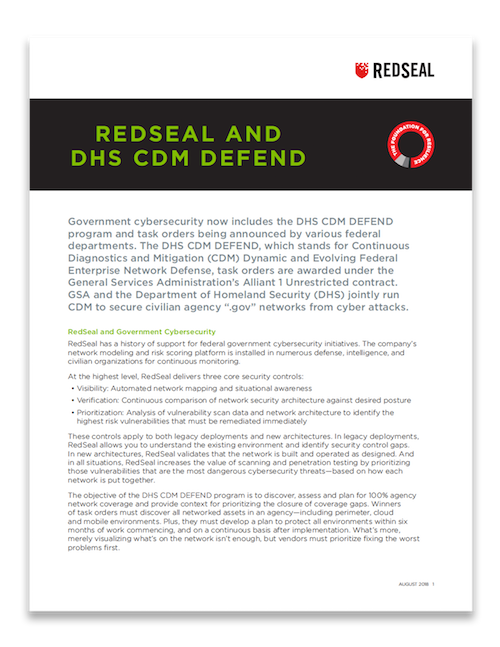What is Continuous Diagnostics and Mitigation (CDM)?
Government cybersecurity now includes the DHS CDM DEFEND program and task orders being announced by various federal departments. The DHS CDM DEFEND, which stands for Continuous Diagnostics and Mitigation (CDM) Dynamic and Evolving Federal Enterprise Network Defense, task orders are awarded under the General Services Administration’s Alliant 1 Unrestricted contract. GSA and the Department of Homeland Security (DHS) jointly run CDM to secure civilian agency “.gov” networks from cyber attacks.
“DHS’s Continuous Diagnostics and Mitigation (CDM) program is a dynamic approach to fortifying the cybersecurity of government networks and systems. CDM provides federal departments and agencies with capabilities and tools that identify cybersecurity risks on an ongoing basis, prioritize these risks based upon potential impacts, and enable cybersecurity personnel to mitigate the most significant problems first. Congress established the CDM program to provide adequate, risk-based, and cost-effective cybersecurity and more efficiently allocate cybersecurity resources.”
RedSeal and Government Cybersecurity Compliance
RedSeal has a history of compliance and support for federal government cybersecurity initiatives. The company’s network modeling and risk scoring platform is installed in numerous defense, intelligence, and civilian organizations for continuous monitoring. At the highest level, RedSeal delivers three core security controls:
- Visibility: Automated network mapping and situational awareness
- Verification: Continuous diagnostics of network security architecture compared against desired posture
- Prioritization: Analysis of vulnerability scan data and network architecture to identify the highest risk vulnerabilities that must be remediated immediately
RedSeal provides a substantial contribution to the Continuous Diagnostics and Mitigation CDM framework by delivering a unique control set for boundary protection, situational awareness, vulnerability mitigation prioritization, and configuration management.
How Does RedSeal Fit with DHS CDM DEFEND Solution Requirements?
RedSeal supports six of the eight DHS CDM DEFEND solution requirements.:
Hardware Asset Management: RedSeal’s complete network map and network device inventory provides a framework for hardware inventory processes and discovery. The solution also provides a complete inventory of in-scope Layer 2 and Layer 3 network devices.
Configuration Settings Management: RedSeal automatically analyzes individual device configurations to see if they are secure. This includes password policies for firewalls, routers, load balancers, and wireless controllers, services enabled, logical port configurations, and networking parameters. You can also create custom checks and be notified automatically about any deviations from baselines.
Vulnerability Management: At the highest level, vulnerability management consists of two tasks: vulnerability scanning and remediation. RedSeal can determine if you have any gaps in your vulnerability scan coverage and identify the device blocking it. In addition, RedSeal has a unique ability to prioritize remediation by identifying the vulnerabilities that pose the highest risk—in each network.
Boundary Protection: Effective boundary protections are typically based on network architecture and access policies on routers, switches and firewalls. In practice, it is extremely difficult to operationalize this control, especially in multi-vendor environments. However, RedSeal Is able to analyze networks continuously and evaluate possible connectivity against desired policy. A continuous diagnostics program conserves resources, delivers cyber situational awareness and reduces the chance of network disruption.
Incident Response: Many information sources and technical disciplines must work in concert for effective incident response. Once an indicator of compromise is identified by a SIEM, RedSeal brings network topology and reachability information to help determine how significant the risk is and what systems may be at risk. Normally this is a manual and time-consuming process, relying on traceroutes and network maps that are often out of date. RedSeal automates this entire network investigation process, providing incident response teams with accurate information about network exploitation paths so their response can be quicker and more focused.


